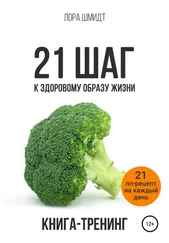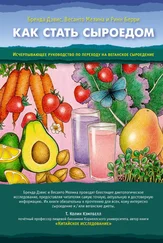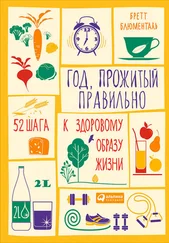9. Institute of Medicine. Dietary Reference Intakes for Energy, Carbohydrate, Fiber,Fat,FattyAcids,Cholesterol,Protein,andAminoAcids(Macronutrients) . Washington, D.C.: National Academies Press; 2005.
10. WHO. WHO | Diet, Nutrition and the PreventionofChronicDiseases . Vol No. 916. Rome: World Health Organization; 2003. URL: https://www.who.int/dietphysicalactivity/publications/trs916/en/. Accessed January 22, 2019.
11. Eckel RH, Jakicic JM, Miller NH, et al. 2013 AHA / ACC Guideline on Lifestyle Management to Reduce Cardiovascular Risk A Report of the American College of Cardiology / American Heart Association Task Force on Practice Guidelines. Circulation . 2013: 1–46.
12. U.S. Department of Agriculture. Agriculture Research Service. Nutrient Data Library. USDA National Nutrition Database for Standard Reference, Legacy Version Current: April 2018. URL: https://ndb.nal. usda.gov/ndb/search/list.
13. Santoro N, Caprio S, Giannini C, et al. Oxidized fatty acids: A potential pathogenic link between fatty liver and type 2 diabetes in obese adolescents? Antioxid Redox Signal . 2014; 20(2): 383–389.
14. Codoñer-Franch P, Navarro-Ruiz A, Fernández-Ferri M, Arilla-Codoñer Á, Ballester-Asensio E, Valls-Bellés V. A matter of fat: Insulin resistance and oxidative stress. Pediatr Diabetes . 2012; 13(5): 392–399.
15. Das UN. Essential fatty acids: Biochemistry, physiology and pathology. Biotechnol J . 2006; 1(4): 420–439.
Глава 7
1. World Cancer Research Fund, American Institute for Cancer Research. Food, Nutrition, Physical Activity and the PreventionofCancer: AGlobalPerspective. Washington, D.C.; 2007.
2. Winter CK, Davis SF. Organic Foods. J Food Sci . 2006; 71(9): R117–R124.
3. Young JE, Zhao X, Carey EE, et al. Phytochemical phenolics in organically grown vegetables. Mol Nutr Food Res . 2005; 49(12): 1136–1142.
4. Crinnion WJ. Organic foods contain higher levels of certain nutrients, lower levels of pesticides, and may provide health benefits for the consumer. Altern Med Rev . 2010; 15(1): 4–12.
5. Getahun SM, Chung FL. Conversion of glucosinolates to isothiocyanates in humans after ingestion of cooked watercress. Cancer Epidemiol Biomarkers Prev . 1999; 8(5): 447–451.
6. Conaway CC, Getahun SM, Liebes LL, et al. Disposition of glucosinolates and sulforaphane in humans after ingestion of steamed and fresh broccoli. Nutr Cancer . 2000; 38(2): 168–178.
7. Shapiro TA, Fahey JW, Wade KL, Stephenson KK, Talalay P. Chemoprotective glucosinolates and isothiocyanates of broccoli sprouts: Metabolism and excretion in humans. Cancer Epidemiol Biomarkers Prev . 2001; 10(5): 501–508.
8. Vermeulen M, van den Berg R, Freidig AP, van Bladeren PJ, Vaes WHJ. Association between consumption of cruciferous vegetables and condiments and excretion in urine of isothiocyanate mercapturic acids. J Agric Food Chem . 2006; 54(15): 5350–5358.
9. Ferracane R, Pellegrini N, Visconti A, et al. Effects of different cooking methods on antioxidant profile, antioxidant capacity, and physical characteristics of artichoke. J Agric Food Chem . 2008; 56(18): 8601–8608.
10. Miglio C, Chiavaro E, Visconti A, et al. Effects of different cooking methods on nutritional and physicochemical characteristics of selected vegetables. J Agric Food Chem . 2008; 56(1): 139–147.
11. Dewanto V, Wu X, Adom KK, Liu RH. Thermal Processing Enhances the Nutritional Value of Tomatoes by Increasing Total Antioxidant Activity. J Agric Food Chem . 2002; 50(10): 3010–3014.
12. Porrini M, Riso P, Testolin G. Absorption of lycopene from single or daily portions of raw and processed tomato. Br J Nutr . 1998; 80(4): 353–361.
13. Gärtner C, Stahl W, Sies H. Lycopene is more bioavailable from tomato paste than from fresh tomatoes. Am J Clin Nutr . 1997; 66(1): 116–122.
14. Livny O, Reifen R, Levy I, et al. Beta-carotene bioavailability from differently processed carrot meals in human ileostomy volunteers. Eur J Nutr . 2003; 42(6): 338–345.
15. Prince MR, Frisoli JK. Beta-carotene accumulation in serum and skin. Am J Clin Nutr . 1993; 57(2): 175–181.
16. Jalal F, Nesheim MC, Agus Z, et al. Serum retinol concentrations in children are affected by food sources of beta-carotene, fat intake, and anthelmintic drug treatment. Am J Clin Nutr . 1998; 68(3): 623–629.
17. van het Hof KH, West CE, Weststrate JA, Hautvast JGAJ. Dietary factors that affect the bioavailability of carotenoids. J Nutr . 2000; 130(3): 503–506.
18. Brown MJ, Ferruzzi MG, Nguyen ML, et al. Carotenoid bioavailability is higher from salads ingested with full-fat than with fat-reduced salad dressings as measured with electrochemical detection. Am J Clin Nutr . 2004; 80(2): 396–403.
19. Unlu NZ, Bohn T, Clinton SK, Schwartz SJ. Carotenoid absorption from salad and salsa by humans is enhanced by the addition of avocado or avocado oil. J Nutr . 2005; 135(3): 431–436.
20. Maiani G, Castón MJP, Catasta G, et al. Carotenoids: actual knowledge on food sources, intakes, stability and bioavailability and their protective role in humans. Mol Nutr Food Res . 2009; 53 Suppl 2(S2): S194–218.
21. Rock CL, Lovalvo JL, Emenhiser C, et al. Bioavailability of beta-carotene is lower in raw than in processed carrots and spinach in women. J Nutr . 1998; 128(5): 913–916.
22. McEligot AJ, Rock CL, Shanks TG, et al. Comparison of serum carotenoid responses between women consuming vegetable juice and women consuming raw or cooked vegetables. Cancer Epidemiol Biomarkers Prev . 1999; 8(3): 227–231.
23. Reboul E, Richelle M, Perrot E, et al. Bioaccessibility of carotenoids and vitamin E from their main dietary sources. J Agric Food Chem . 2006; 54(23): 8749–8755.
24. Katina K, Liukkonen K, Kaukovirta-norja A, et al. Fermentation-induced changes in the nutritional value of native or germinated rye. Journal of Cereal Science . 2007; 46(3): 348–355.
25. Lee SU, Lee JH, Choi SH, et al. Flavonoid content in fresh, home-processed, and light-exposed onions and in dehydrated commercial onion products. J Agric Food Chem . 2008; 56(18): 8541–8548.
26. Fahey JW, Zhang Y, Talalay P. Broccoli sprouts: an exceptionally rich source of inducers of enzymes that protect against chemical carcinogens. Proc Natl Acad Sci USA . 1997; 94(19): 10367–10372.
27. Yang F, Basu TK, Ooraikul B. Studies on germination conditions and antioxidant contents of wheat grain. Int J Food Sci Nutr . 2001: 52(4); 319–330.
28. Calzuola I, Marsili V, Gianfranceschi GL. Synthesis of antioxidants in wheat sprouts. J Agric Food Chem . 2004; 52(16): 5201–5206.
29. Marsili V, Calzuola I, Gianfranceschi GL. Nutritional relevance of wheat sprouts containing high levels of organic phosphates and antioxidant compounds. J Clin Gastroenterol . 2004; 38(6 Suppl): S123–126.
30. Liukkonen K-H, Katina K, Wilhelmsson A, et al. Process-induced changes on bioactive compounds in whole grain rye. Proc Nutr Soc . 2003; 62(1): 117–122.
31. Randhir R, Ms YL, Shetty K. Phenolics, their antioxidant and antimicrobial activity in dark germinated fenugreek sprouts in response to peptide and phytochemical elicitors. Asia Pac J Clin Nutr. 2004; 13(April): 295–307.
32. Fahey JW, Haristoy X, Dolan PM, et al. Sulforaphane inhibits extracellular, intracellular, and antibiotic-resistant strains of Helicobacter pylori and prevents benzo[a]pyrene-induced stomach tumors. Proc Natl Acad Sci USA . 2002; 99(11): 7610–7615.
33. Galan M V, Kishan AA, Silverman ANNL. Oral broccoli sprouts for the treatment of helicobacter pylori infection: A preliminary report. 2004; 49: 1088–1090.
Читать дальше
Конец ознакомительного отрывка
Купить книгу
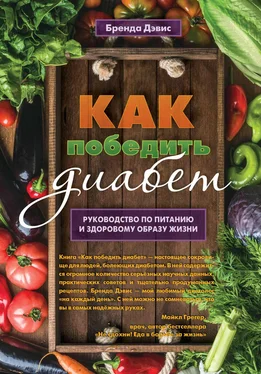

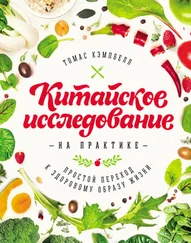

![Карин Дина - Справочник сыроеда [Краткое руководство по питанию свежей растительной пищей]](/books/389267/karin-dina-spravochnik-syroeda-kratkoe-rukovodstvo-thumb.webp)




